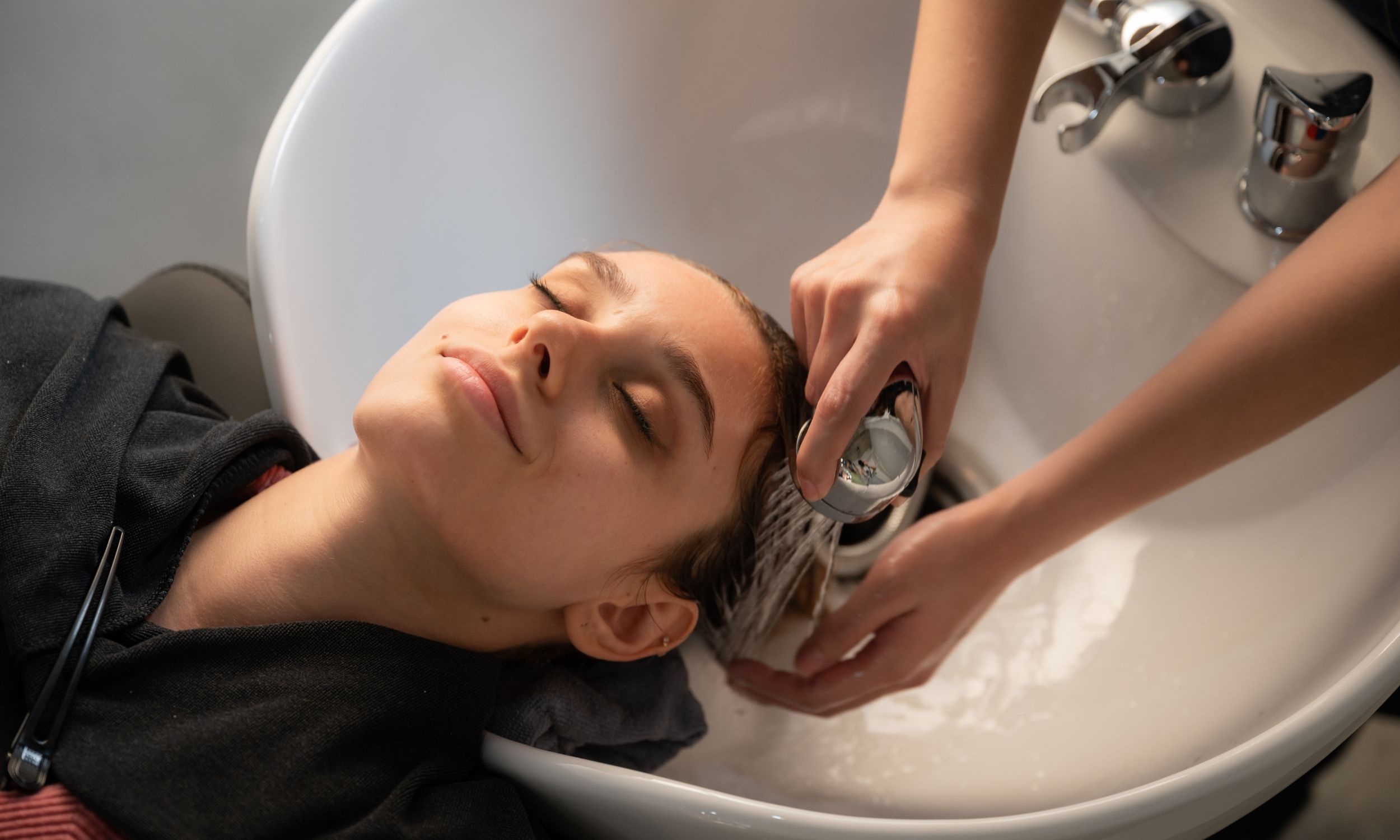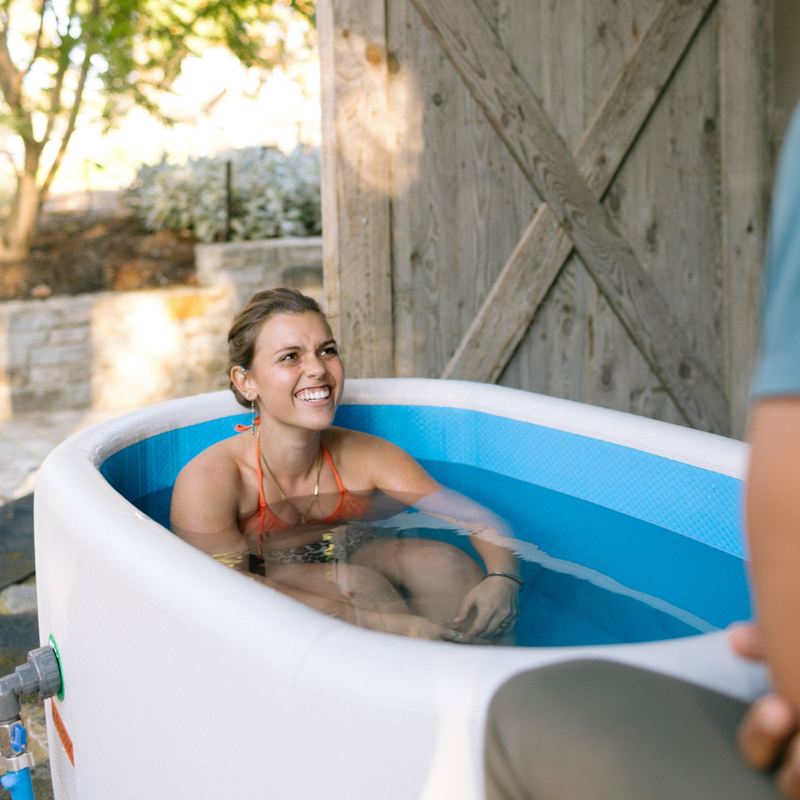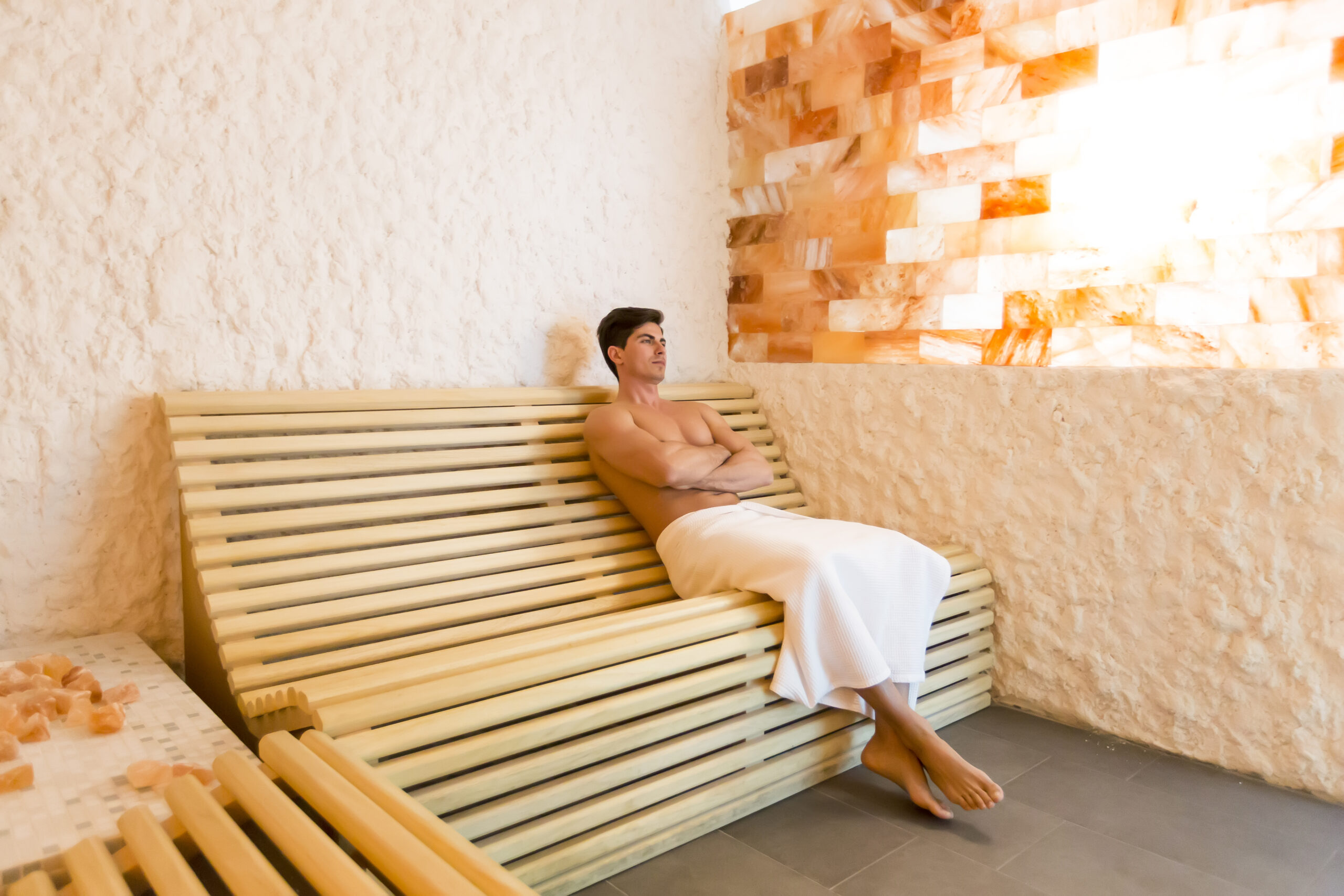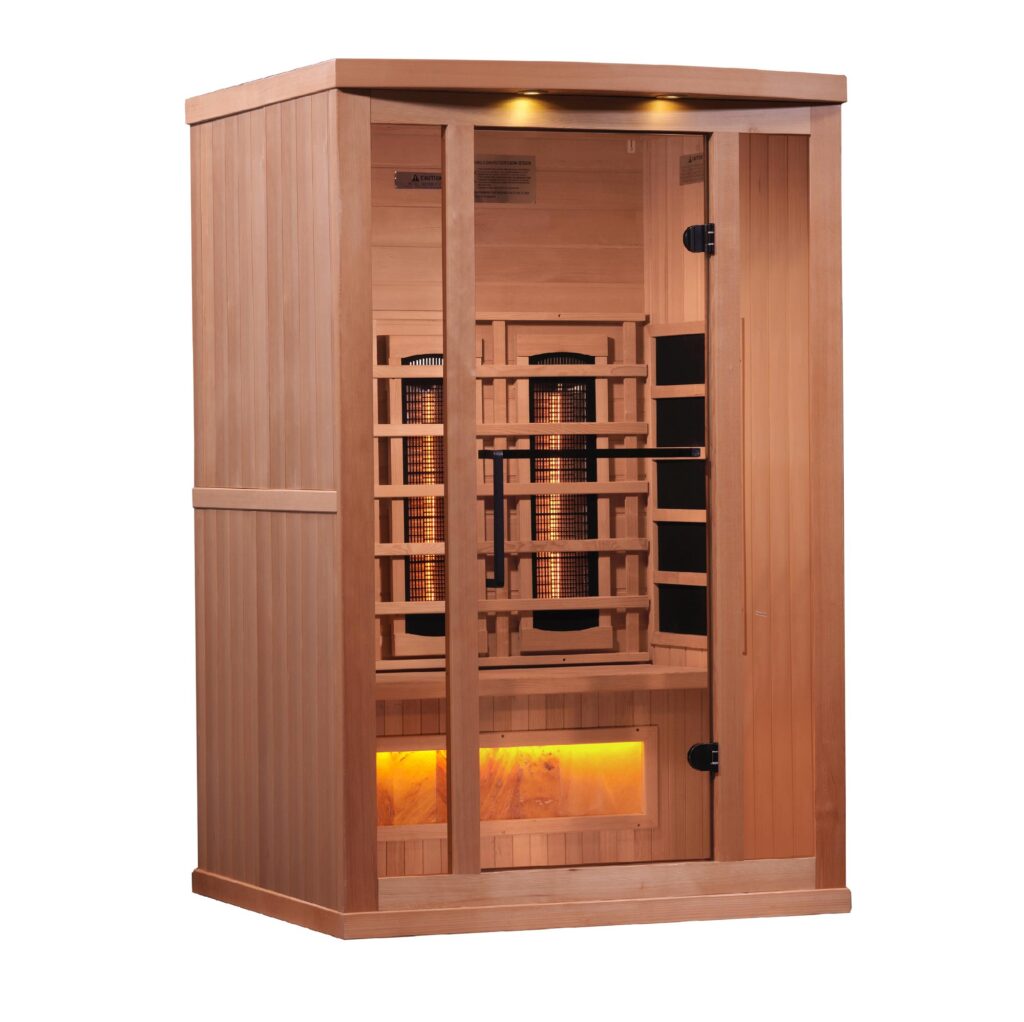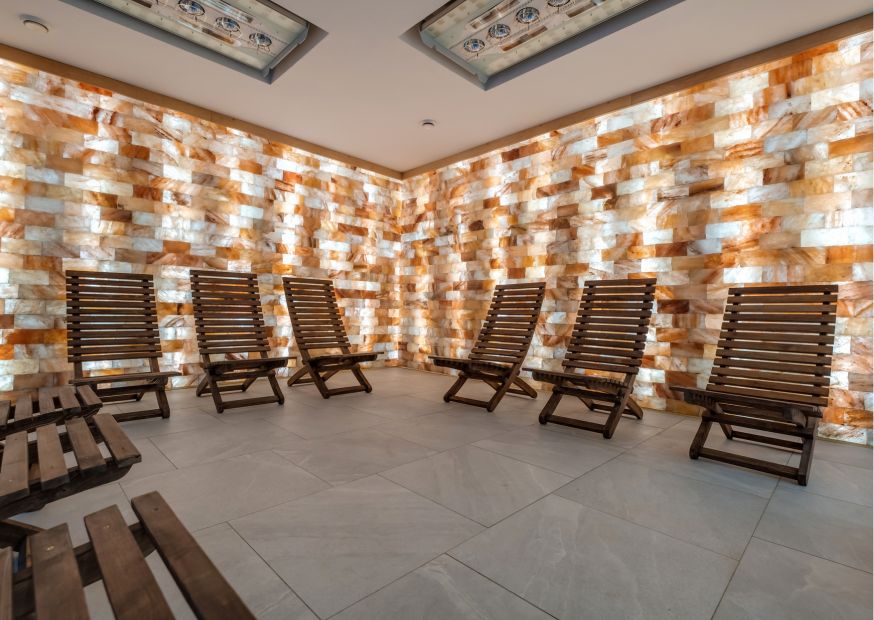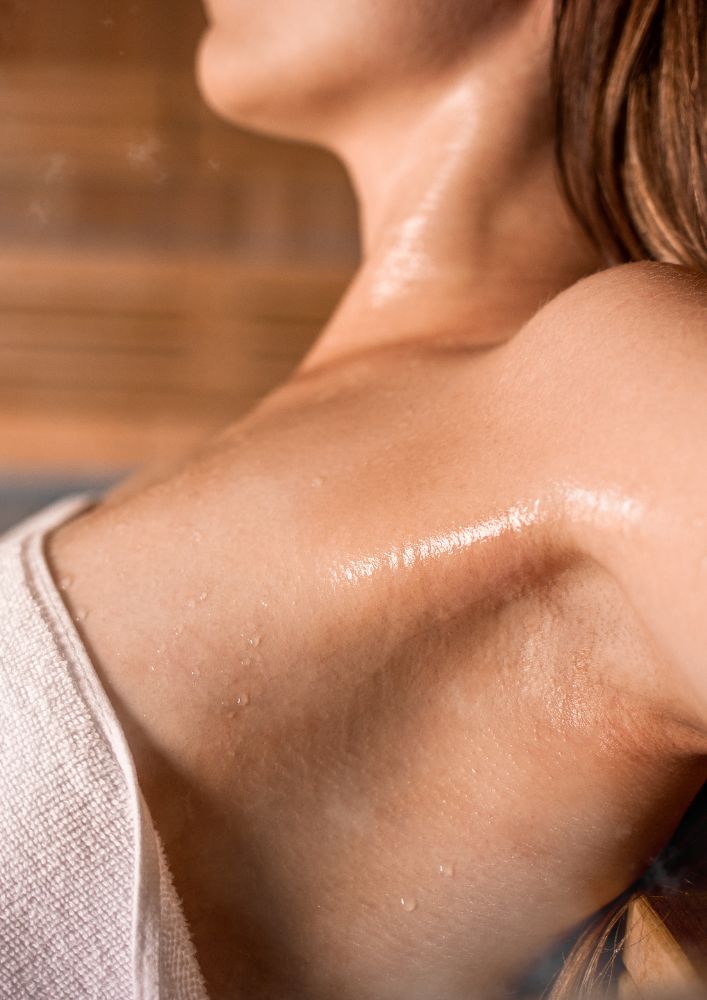The health benefits derived from regular sauna use are innumerable. The body responds in an escalation of vibrant health as a result of the increased heat exposure: From heart health, to improved immunity, circulation, glowing skin, a supercharged brain, and so much more, but what about hair?
The hair care industry accounts for 13.4 billion US dollars globally (1), and with so much money going towards hair care products and styling, most folks want to know how their sauna use might affect their hair. Most sauna-related studies and articles do not talk about the relationship between hair and sauna use, but this one will aim to answer most of your hair care questions related to sauna use.
Steam rooms, traditional saunas, and infrared saunas all have very different effects on hair. The two primary concerns when it come to hair and sauna use are as follows:
- Can sauna use help with hair growth?
- How will sauna use affect the quality of my hair: Blow-outs, hair dye, weaves, extensions, overall dryness, etc.
Saunas, if not directly, may have a correlative effect on hair growth in some cases that are connected to auto-immune disorders and the autonomic nervous system. It is important to remember that each individual has a very unique type of hair (if any hair at all), and certain conditions will respond more positively to sauna use for hair growth than others.
Reasons For Hair Loss and How Saunas May Help Improve the Condition
- Stress
- Auto-Immune Disorders
- Androgenetic Alopecia (Male Pattern Baldness)
Stress The Autonomic Nervous System, Sauna Use, and Hair Growth
A stressful lifestyle, stressful life event, or trauma can cause the thinning of hair or the complete loss of hair on the head. This can be seen, for example, when someone loses a loved one, in the wake of a natural disaster, ongoing financial stress, or any event or sequence of events that keeps the autonomic nervous system in a constant state of fight or flight. For this cause of hair loss, regular sauna use (all sauna types) can be a valuable tool to help hair grow back with greater ease and speed. (2)

Hair growth is an involuntary process, and therefore, is considered to be part of the autonomic nervous system. Hair is not viewed by the body as necessary, so during a time when trauma occurs and the individual is pushed into a state of sympathetic dominance or fight/flight for a prolonged period of time, they can experience a complete loss of hair.
If your hair loss is stress related, then undergoing some positive stress (hormesis) during a sauna session, will give way to states of deep relaxation and improved sleep. When this occurs, the autonomic nervous system swings like a pendulum back into a state of rest & digest, or relaxation and healing. In this state of being, the body is able to heal itself, including involuntary processes such as hair growth.
Saunas of all types including traditional, steam, and infrared may all be helpful in allowing the autonomic nervous system to easily slide back into states of relaxation, where hair growth can return to normal after a stressful life event or events.
Autoimmune Disorders
The same principles mentioned above also apply to individuals living with autoimmune disorders that may cause hair loss. All of these diseases are aggravated by prolonged states of stress response. It can be helpful for anyone living with an autoimmune disorder to spend time in the sauna. If hair growth is a concern, you will want to make sure you are engaging in activities that actively promote positive autonomic nervous system responses to support your body’s natural mechanism towards hair growth. Transferring the autonomic nervous system back into parasympathetic dominance or states of relaxation through sauna use may help with a variety of autoimmune disorders that cause hair loss.
Androgenetic Alopecia
Unfortunately, for male pattern baldness (Androgenetic Alopecia), there is often little that can be done. There are some biomedical professionals who believe that exposure to red and near infrared light (photobiomodulation) may improve hair growth in individuals who have lost hair on their head. At present, there is simply not enough data to quantify this claim. It is true, however, that photobiomodulation does improve mitochondrial metabolism, blood circulation, collagen & elastin production, all of which could potentially help with hair growth (3). All of the positive effects that are correlated with red light therapy may help individuals who have lost hair due to stress and disease, but it is still questionable whether it will positively impact male pattern baldness.
Baldness, or the thinning of hair in aging men, is often a result of the disappearance of the hair follicle itself as a result of a genetic predisposition toward this process. There is, however, some anecdotal evidence to suggest that photobiomodulation has helped some men regrow hair. During a full spectrum infrared sauna, the individual can turn on the ‘red’ color light on the ceiling as part of the chromotherapy, and when this is joined with the ceramic near infrared light, the effect of photobiomodulation does occur, and may just help the head hair to grow back!
FAQs On Hair Care and Consistent Sauna Use
- Blowouts
- Extensions
- Weaves
- Hair Dye
- Completely Bald Scalp
- Dryness
If you are someone who has put time and money into your hair care, then you will want to make sure that you approach your sauna use with care. Paying special attention to the type of sauna that you are using and your specific hair care needs (even if you are bald).
Traditional Saunas & Steam Rooms + Haircare (Weaves, Blowouts, and Extensions, and Wigs)
Traditional saunas and steam rooms are very moist, and no amount of preparation can be taken to preserve a blowout. You will need to get your blowout after you sauna, without question.
Your head will get very wet in a steam room so you will need to take the same precautions with a weave or extensions that you would when swimming.
If there is any glue in your weave, then you will want to be mindful of the high heat of a traditional sauna. These saunas can reach up to 190 degrees Fahrenheit and may affect the glue.

If you dye your hair, then a steam room or traditional sauna will affect your hair as much as swimming in non-chlorinated water. If you are completely bald, then the moisture from these types of saunas will have no effect on your bald scalp.
If you have spent money on a nice wig and want to preserve it, DO NOT wear it in a sauna. If you feel more comfortable, wrap your head in a scarf rather than sacrificing your wig.
It is worth wrapping your hair in a scarf or silk fabric if you have extensions, weaves, or hair dye to help preserve your style.
If you have wavy to curly hair, your hair will get much frizzier in a steam room or traditional sauna, so you may want to consider a conditioner mask, or just a conditioner set, while you sauna with your hair up in a bun or ponytail. Remember to rinse with cold water when your session is complete.
Infrared Saunas and Your Hair Care
Infrared saunas, in general, are more hair care ‘friendly’ than steam rooms or traditional saunas because they are much dryer. This fact makes it both easier on hair in some ways, but you will need to consider maintaining moisture in your hair and scalp if you are using an infrared sauna regularly.
Extensions, Weaves, and Infrared Saunas
If you have extensions or a weave, you will still need to be mindful of any chemicals (including glue) that may be associated with your weave or extensions. As you will sweat considerably in an infrared sauna, your hair may not stay completely dry. Infrared wavelengths penetrate deeply beyond layers of clothing and even through the epidermis. It is recommended that you wrap your hair up into either silk cloth, or even cotton fabric. The more organic your hair extensions or weaves are, the better they will respond to the high heat.
Do not wear a wig inside the sauna if at all possible, as it will not be good for the wig itself. If you feel you must wear your wig in the sauna, your scalp itself will not be negatively affected by wearing a wig (it’s more of a concern for the wig itself).
Infrared Saunas, Hair Dye, Dryness, and a Mostly Bald Scalp
The primary issue with infrared saunas and your hair is that the experience tends to dry hair or the scalp out. If you have long hair it is recommended that you pre-set hair conditioner, and then wash this out with cold water after your sauna, this will help to prevent your hair from getting dry and splitting off.
If your hair is dyed, consult with your hair care specialist on how to best approach a situation where your hair will be exposed to dry heat. It is most likely that you will have a hair dye preservative conditioner that you can apply to your hair before beginning your sauna session.
If your scalp is mostly bald, then you will want to oil your scalp slightly with argan oil, or coconut oil, to prevent drying of the scalp.
Bring a towel with you into the sauna so that you can remove any dripping sweat, conditioner, or oil, out of the way of your eyes as you sauna.
Blow-Outs, Flat Ironed Straightened Hair, and Infrared Saunas
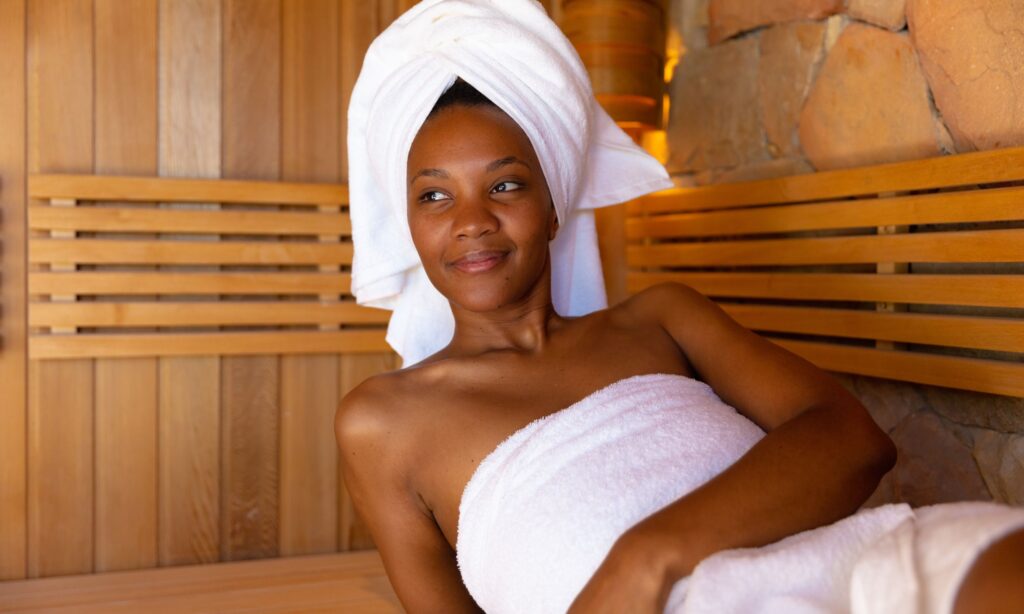
Your blow out or straightened hair will actually survive an infrared sauna session, surprisingly. You will need to use bobby pins (they will heat up in the sauna) to pin your hair up in a circular fashion around your head. You will then want a silk scarf (silk is preferred, but cotton is ok) to wrap around your pinned hair. You will sweat, of course, but this will have minimal effects on your blow-out.
Clearly, if you have a special event coming up, sauna first, and get your hair done after you shower and wash the sweat off. That being said, an infrared sauna is definitely the way to go if you are hoping to preserve your blow-out or straightened hair.
Hair Growth, Hair Care, and Sauna Use
Habitual sauna use as a lifestyle is certainly not the cure-all for baldness. However, if hair loss is caused by stress, or disease, it may be possible to support physiology in such a way as to ensure the return of healthy hair growth. Red Light therapy may help in male pattern baldness, but it is unlikely to directly cause hair growth to return.
For anyone choosing to wear a weave, or extensions, special precautions should be taken for high heat, as well as moisture. If you are unsure how your hair style will be affected by the heat or humidity of certain saunas, then it is best to consult with your hair care specialist.
It is definitely possible to reap the health benefits of regular sauna use and have great hair, you may just need to be mindful of what sauna type you choose, and prepare your hair accordingly.
Sources Cited:
- https://www.statista.com/outlook/cmo/beauty-personal-care/personal-care/hair-care/united-states#revenue
- https://www.ncbi.nlm.nih.gov/books/NBK539845/
- https://www.ncbi.nlm.nih.gov/pmc/articles/PMC7356229/

